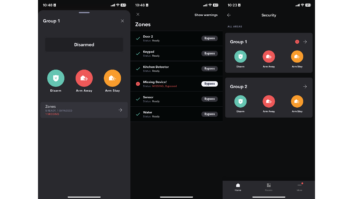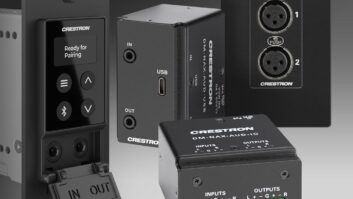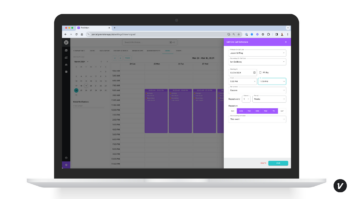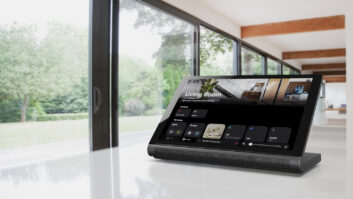Crestron’s new DMCI (DigitalMedia Card Interface) solution is now shipping and will be showcased at CEDIA EXPO.
The DMCI is a compact, rack-mountable enclosure designed to house a single DM Input Card to accept any AV source and output its signals as HDMI. It is compatible with all analog audio and video, computer, HDMI, DVI, and DisplayPort signals. DMCI also handles USB-HID over Ethernet for remote, wireless keyboard and mouse control.
Crestron’s QuickSwitch HD HDMI switcher provides the only fully integrated source-switching solution for modern home theaters, meeting rooms, and classrooms. It provides a variety of different signal formats that must all be displayed on 1080p displays via HDMI. DMCI manages HDCP, EDID, and CEC data communication and functions as a DM receiver as part of a complete Crestron DigitalMedia system.
Home theaters, classrooms, and conference rooms today include a variety of analog and digital signal formats, including DVD/Blu-ray players, PCs, MacBooks, and streaming media over the Internet, which often are not fully integrated. New HD digital signals include embedded data such as HDCP, EDID, and CEC, which create several new challenges for system design and installation. Combined with the HD-MD8x1 or HD-MD8x2, DMCI is the ideal, cost-effective solution to provide a seamless, fully integrated in-room switching solution.
With a wide selection of DMC input cards available for every audio/video signal type, integrators simply select the type and quantity needed for their design to accept any composite, component, S-video, VGA, DisplayPort (multimode), DVI,or even Crestron DM source signal, and output HDMI to an HD display. The versatile DMCI enables installers to deliver the perfect solution for any room environment.
“The DMCI is a powerful problem solver, whether it’s part of a DM system or combined with one of our HDMI switchers” Crestron director of marketing, Vincent Bruno, said. “The DMCI can manage EDID and CEC information, extract audio embedded in HDMI, add video to DVI or provide simultaneous surround sound and stereo audio through HDMI. You get a lot for just a little.”
While any HDMI input can ordinarily accommodate DVI sources with just a simple passive adapter, that design does not support audio signals. Loaded with a DMC-DVI card, the DMCI provides a simple means for merging DVI digital video and analog stereo audio into a single HDMI output.
A DMC-HD HDMI card also allows audio to be extracted from the digital stream via its analog stereo output, while simultaneously allowing the full HDMI signal to pass through unaffected. Yet another option, the DSP-enhanced DMC-HD-DSP card accepts HDMI signals containing multi-channel surround sound audio and also provides a 2-channel down-mix signal, delivering the choice of either 2-channel or multi-channel audio to the HDMI output.
All Crestron digital solutions manage the data embedded in HD digital signals, necessary for reliable system performance. DMCI and QuickSwitch HD switchers properly process and control HDCP content protection, EDID signal format, resolution management, and CEC protocols. Crestron DMCI and QuickSwitch HD switchers pre-authorize the HDCP handshake between sources and displays to ensure fast, uninterrupted source switching.
Through its Cresnet connection to a control system, the DMCI can report EDID information about any connected signal for viewing on a touchpanel or for auto-configuring a display device. Harnessing the CEC signal embedded in HDMI, the DMCI can provide an alternative to conventional IR and RS-232 device control. The DMCI provides a gateway for controlling many devices directly through their HDMI connections, potentially eliminating the need for any dedicated control wires or IR probes.
DMCI is an all-in-one solution for today’s presentation systems and home theaters, overcoming new challenges associated with digital HD signals and integrating disparate analog and digital sources.







